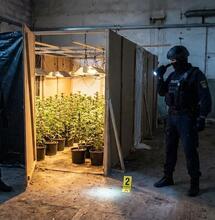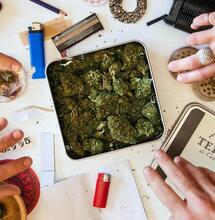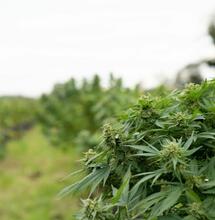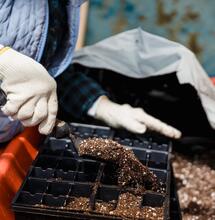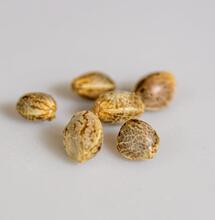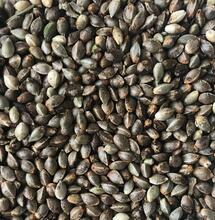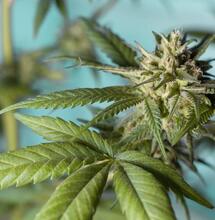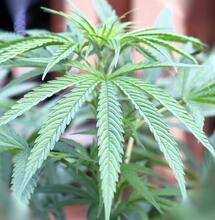The Importance of Plant Auxins in Cannabis Growing

Plant auxins are hormones that guide plant growth and work in conjunction with, but in opposition to, cytokinins. Both substances must be present in order to be effective, but the ratio determines if the net result is to either inhibit shoot growth and promote root growth (that is, if the ratio is auxin-heavy), or promote shoot growth and inhibit root growth (if the ratio is cytokinin-heavy). In this article, the focus falls on plant auxins when growing cannabis.
Types of Auxins
Indole-3-Acetic Acid or IAA is the most influential natural plant auxin, followed by IBA (Indole-3-Butyric Acid). The two other natural plant auxins are 4-Cl-IAA (4-Chloroindole-3-Acetic Acid) and PAA (2-Phenylacetic Acid), which are used by some plants.
The primary, but not only, flow of IAA is from the growth tips down through the phloem, the transport tubes in the stem, toward the root tips. The effect is additive, so the effects of the auxins are lowest at the top of the plant and highest at the root tips. The apical (top) budding site generates IAA but does not get any from above itself and so is the least affected by it. This causes the top bud to grow unhindered and, therefore, generally larger. Anything below it is, in part, influenced by the IAA produced by the bud. A similar effect can be seen on the last budding node on a branch, which also tends to be larger than other sites along the same branch.
A common tactic in pruning is the removal of the top growth tip or bud which also removes the IAA that it was producing. This gives the bud nodes directly below it the advantage of not being hindered, allowing them to develop larger. This is commonly known as 'pinching-off,' because the tips are pinched off the plant, although in practice, using something sharp (such as scissors) is usually preferred.
The Flow of Auxins in Cannabis Plants
In Cannabis, the normal growth pattern is often a large top cola. By pinching off the top growth tip, the next-highest buds will tend to increase in size and they, in turn, will produce IAA to inhibit growth below their growing point. Energy that would have gone into increasing the size of the top bud is divided between the new, topmost buds. This is often done to promote a bushier plant with several acceptably-sized buds, in place of a tall plant with a single, huge top bud.
The top growing tip doesn’t need to be removed in order to take advantage of this phenomenon; alternative methods involve simply bending the top growth tip down to the same level or lower than the next-highest budding sites. Methods such as LST (low-stress training), super-cropping, SCROG (screen-of-green) and similar approaches take advantage of this principle, without removing the apex budding sites. Benefits to using these methods include a reduction in stress from pruning, in addition to preventing the loss of the budding site; however, they are more labor-intensive and they do require more ongoing maintenance. Promoting bushy plant growth by removing growth tips (bonsai technique) will also create progeny (clones) with the same genetics as their mother plant.
Sometimes, the normal auxin flow will get sidetracked in response to stimuli such as light (turning the plant toward the light) or gravity (turning roots downward). It does this by concentrating within an area on the inside of the turn to inhibit growth, allowing the opposite side to grow normally, thereby curving the stem or root in the desired direction. One way to visualize this is to think of toothpaste being squeezed from a tube. If a fingertip is placed on one side of the stream, that will inhibit flow (growth) on that side, and the toothpaste flow will curl in the direction of the fingertip.

Rooting Products and Auxin-based Herbicides
Rooting products generally utilize an auxin of some sort in order to promote root development. These hormones are applied to the cut stem to encourage the undifferentiated meristem cells to become root cells, first forming callouses and then roots on the stem.
Since IAA is not suitable for packaging and storage, most commercial rooting products use either IBA or a synthetic auxin, such as NAA (1-Naphthaleneacetic Acid).
Not all auxins are good for plants; some synthetic auxins are used as herbicides. These auxins send the plant into an uncontrollable growth spurt with which the plant cannot keep up, quickly over-driving it to death.
Broad-leafed dicots (two seed-leaved) plants tend to be more easily influenced by auxins than narrow-leafed monocots (single seed-leaved) grasses. Certain synthetic auxins take advantage of this to selectively affect broad-leafed plants. An example of this is an auxin-based herbicide that kills the dicot dandelion without killing the surrounding monocot grass in the lawn.
Agent Orange was a fifty-fifty mix of the synthetic auxins 2,4,5-T (2,4,5-Trichlorophenoxyacetic Acid) and 2,4-D (2,4-Dichlorophenoxyacetic Acid). The use of 2,4,5-T has long been discontinued in most places due to medical concerns, but 2,4-D is still used as a herbicide.
Some GMO crop plants are specially designed to be even more resistant to the effects of such auxins, with the intent of making them particularly well-suited for use in combination with auxin-based herbicides.
Cytokinins
Cytokinins are the opposites of auxins in more ways than one. Just as auxins are used to promote root growth, cytokinins are used to encourage bushy growth over root development and are used in some plant growth regulator (PGR) products.
As stated above, auxins start at the growth tips and travel down the phloem towards the root tips to encourage roots to grow. Conversely, cytokinins start at the meristem cells located at the roots and travel up the xylem (plant vascular tissue) to encourage shoot cell division (growth). Because of this, damage to the growth tips will reduce the auxins needed for root development, stunting the roots; damage to the roots will reduce the cytokinins needed for shoot development, stunting the growth tips.
Having an understanding of the interaction between auxins and cytokinins is helpful when pruning plants, training branches, trimming roots or applying rooting compound. It should be obvious now why applying an auxin to a cutting is conducive to rooting, but adding a cytokinin would be counterproductive. It should again be stressed that it is the ratio between auxins and cytokinins that matters, so adding both at the same time is generally counterproductive and potentially a waste of money. Use one or the other to promote either root or shoot development, depending upon the desired results.
Also read on Soft Secrets:




